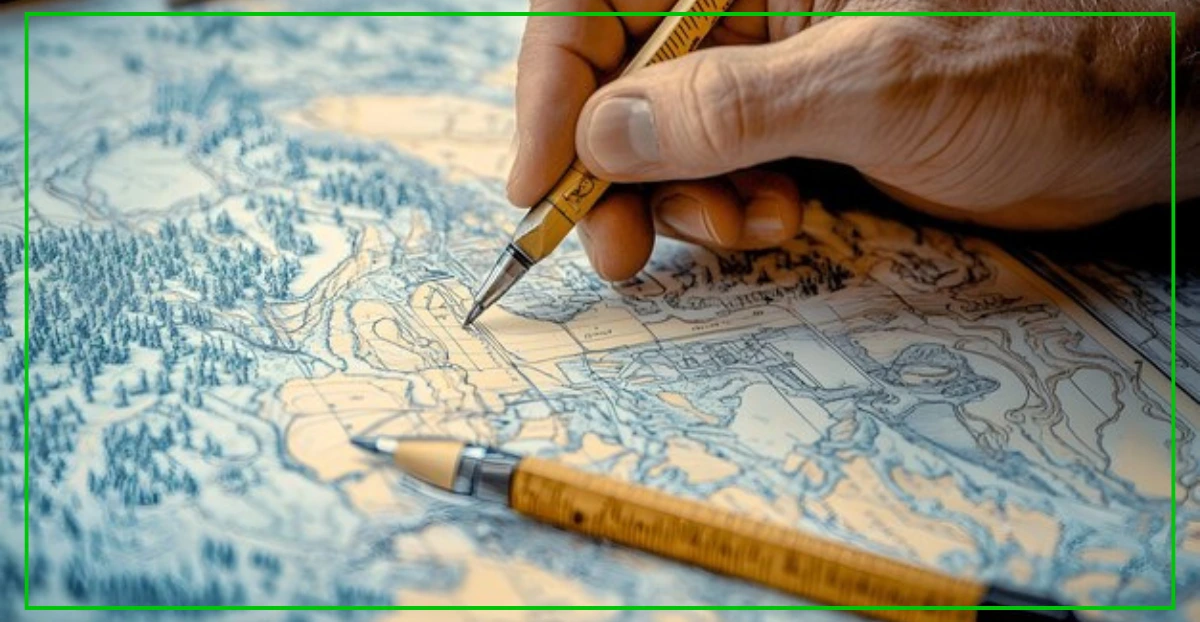15 Cartographic Drafter Interview Questions and Answers
Navigating a career as a Cartographic Drafter requires a blend of artistic creativity, technical precision, and a deep understanding of spatial data. Whether you’re just starting out or have years of experience, preparing for an interview is key to standing out in this competitive field. This guide features 15 essential Cartographic Drafter interview questions and answers to help you showcase your skills, highlight your experience, and impress potential employers. From data integration to map design principles, these questions cover the core areas you need to master. Let’s dive in and get you ready to excel in your next interview! 15 Essential Cartographic Drafter Interview Questions and Answers Here’s a comprehensive list of 15 Cartographic Drafter interview questions along with detailed answers to help you prepare and impress your interviewers. 1. What is your experience with map drafting and design software? Answer: I have extensive experience using industry-standard software like ArcGIS, QGIS, AutoCAD Map 3D, and Adobe Illustrator for cartographic drafting. I’m proficient in tools such as the Layout View in ArcGIS for map composition and have a strong command of symbology, labeling, and data visualization. Additionally, I often use Illustrator to fine-tune map aesthetics and ensure professional-quality outputs. 2. How do you handle working with outdated or incomplete data? Answer: When faced with outdated or incomplete data, I begin by conducting a thorough data quality assessment to determine what information is missing. I often use supplementary datasets from reliable sources or consult with subject matter experts to fill the gaps. If the data discrepancy cannot be resolved, I document it clearly and communicate the limitations of the map to stakeholders. 3. Can you explain the difference between large-scale and small-scale maps? Answer: Large-scale maps show a smaller area with a high level of detail (e.g., 1:10,000), suitable for city maps or site plans. Small-scale maps cover a larger area with less detail (e.g., 1:1,000,000), often used for regional or world maps. In cartographic drafting, choosing the right scale is crucial for ensuring that the map accurately conveys the necessary information. 4. Describe your process for ensuring data accuracy in your maps. Answer: I follow a multi-step quality control process that includes data verification, cross-referencing with authoritative sources, and conducting topology checks to identify and correct errors like overlapping polygons or gaps. I also run spatial analyses and peer reviews to confirm that the data accurately represents the real-world features. 5. What is the importance of map projections, and how do you choose one? Answer: Map projections are crucial because they affect how the Earth’s curved surface is represented on a flat map. I choose a projection based on the purpose of the map and the geographical area being represented. For example, I might use the Mercator projection for navigational maps due to its accurate angle representation, or the Albers Equal-Area projection for thematic maps that require accurate area depiction. Related Articles: Top 17 Cartographer Interview Questions 15 Must-Ask Interview Questions for Cartographer 15 Cartographic Designer Interview Questions 6. How do you simplify complex data for a non-technical audience? Answer: I focus on using clear visual hierarchies, simplified symbology, and minimal jargon. I use legends and annotations to explain complex elements and employ techniques like color coding and graphical representations (e.g., pie charts or heat maps) to make the data more accessible and easy to understand. 7. Describe a challenging project where you had to integrate multiple data sources. Answer: In a recent project, I had to create a regional land use map using datasets from different sources, including satellite imagery, field surveys, and local government records. I began by standardizing the datasets, resolving discrepancies in data formats, and aligning coordinate systems. Through careful data integration and consistency checks, I was able to produce a cohesive and accurate map. 8. How do you choose colors and symbols for your maps? Answer: I use color schemes that align with the map’s purpose and consider color accessibility (e.g., color-blind friendly palettes). I follow cartographic design principles, choosing symbols that are intuitive and easily distinguishable. For thematic maps, I use graduated colors to represent data variations effectively, ensuring that the colors are harmonious and enhance readability. 9. Can you explain your approach to map labeling? Answer: I follow the principles of readability and hierarchy. I prioritize the most important features for larger, bolder labels and use smaller fonts for secondary information. I ensure that labels are placed without obscuring map features, using techniques like curved text for rivers and adjusting label placement dynamically for densely packed areas. 10. What strategies do you use to avoid common cartographic errors? Answer: I implement a robust quality assurance process, which includes topology checks, visual inspections, and peer reviews. I also regularly validate the data sources I use, ensuring that any outdated or inconsistent data is flagged. Additionally, I keep up with best practices in cartography to avoid common pitfalls like distortion from improper projections or inconsistent symbology. 11. How do you handle feedback or revisions from clients? Answer: I view client feedback as an opportunity to refine the map and ensure it meets their needs. I maintain an open line of communication, asking for clarification if needed and providing professional advice when their requests might affect the map’s accuracy or clarity. I prioritize the revisions based on client feedback while adhering to cartographic standards. 12. What is your experience with designing thematic maps? Answer: I have extensive experience designing thematic maps, including choropleth maps, heat maps, and dot density maps. I focus on using effective color schemes and data classification methods, such as natural breaks or equal intervals, to accurately represent the data. My goal is to ensure that the thematic map is both visually appealing and informative. 13. How do you ensure your maps are accessible to all users, including those with visual impairments? Answer: I use color-blind friendly palettes and ensure that all map elements have sufficient contrast. Additionally, I include text labels and avoid relying solely on color to convey information. When designing … Read more

